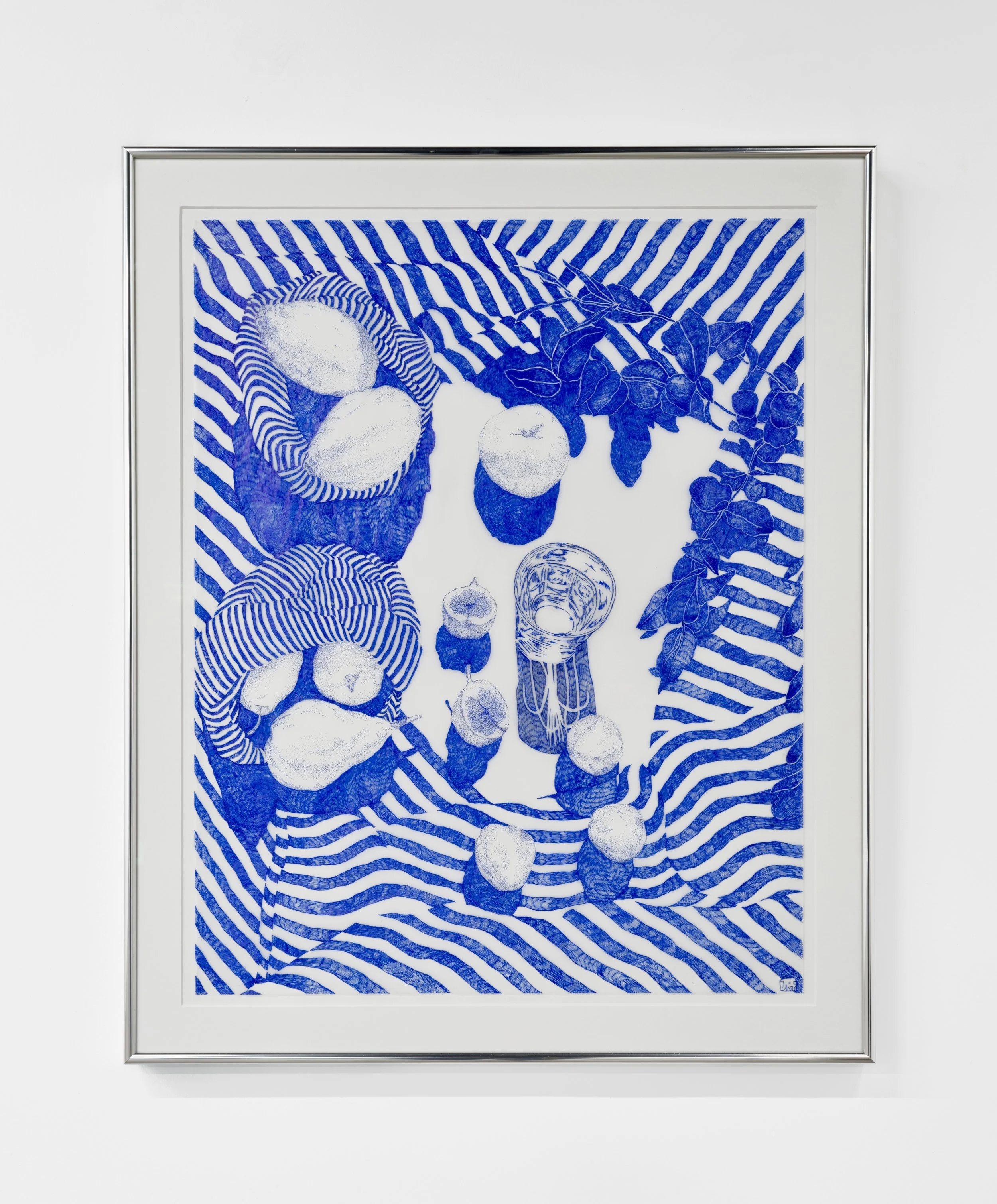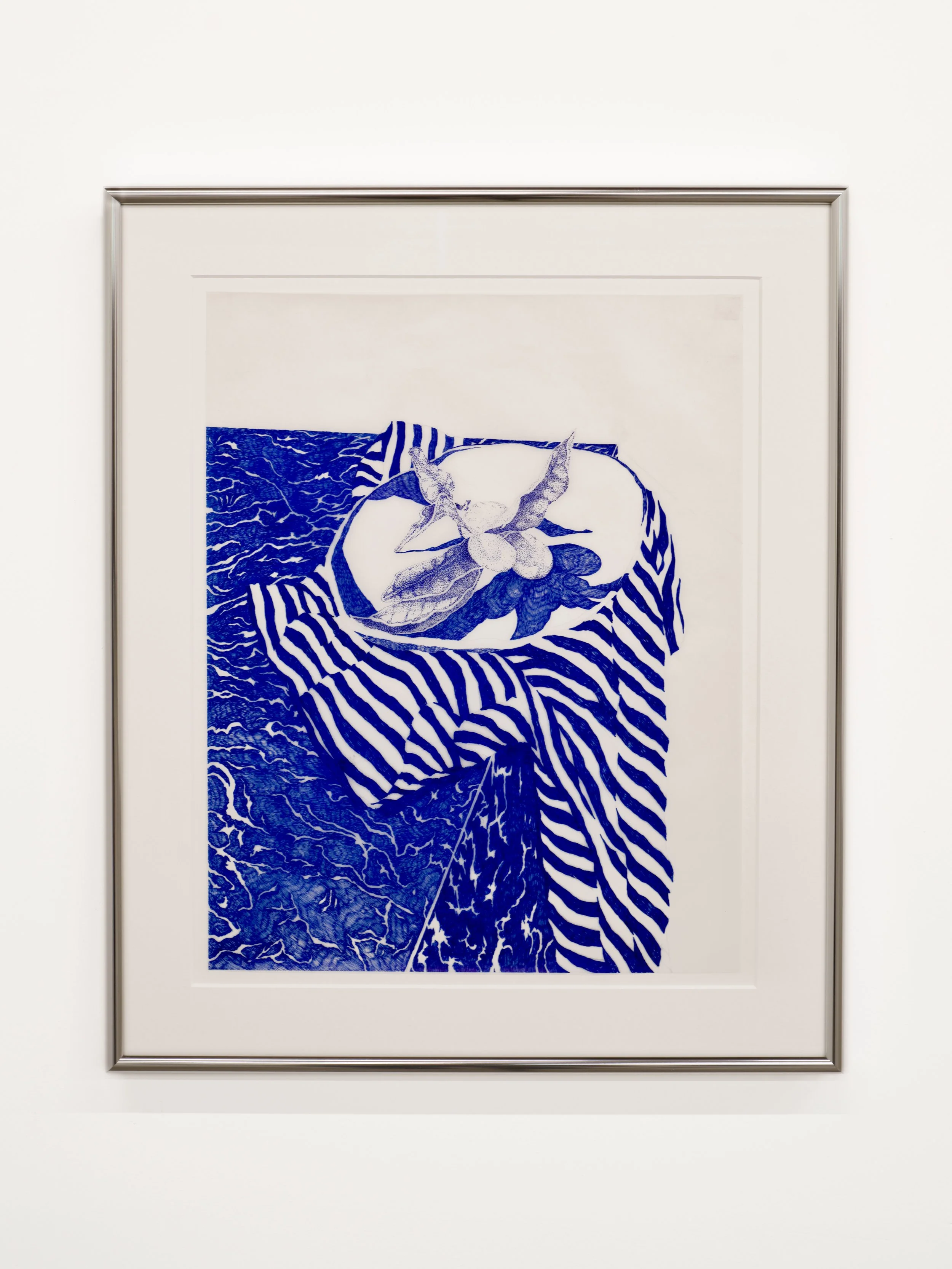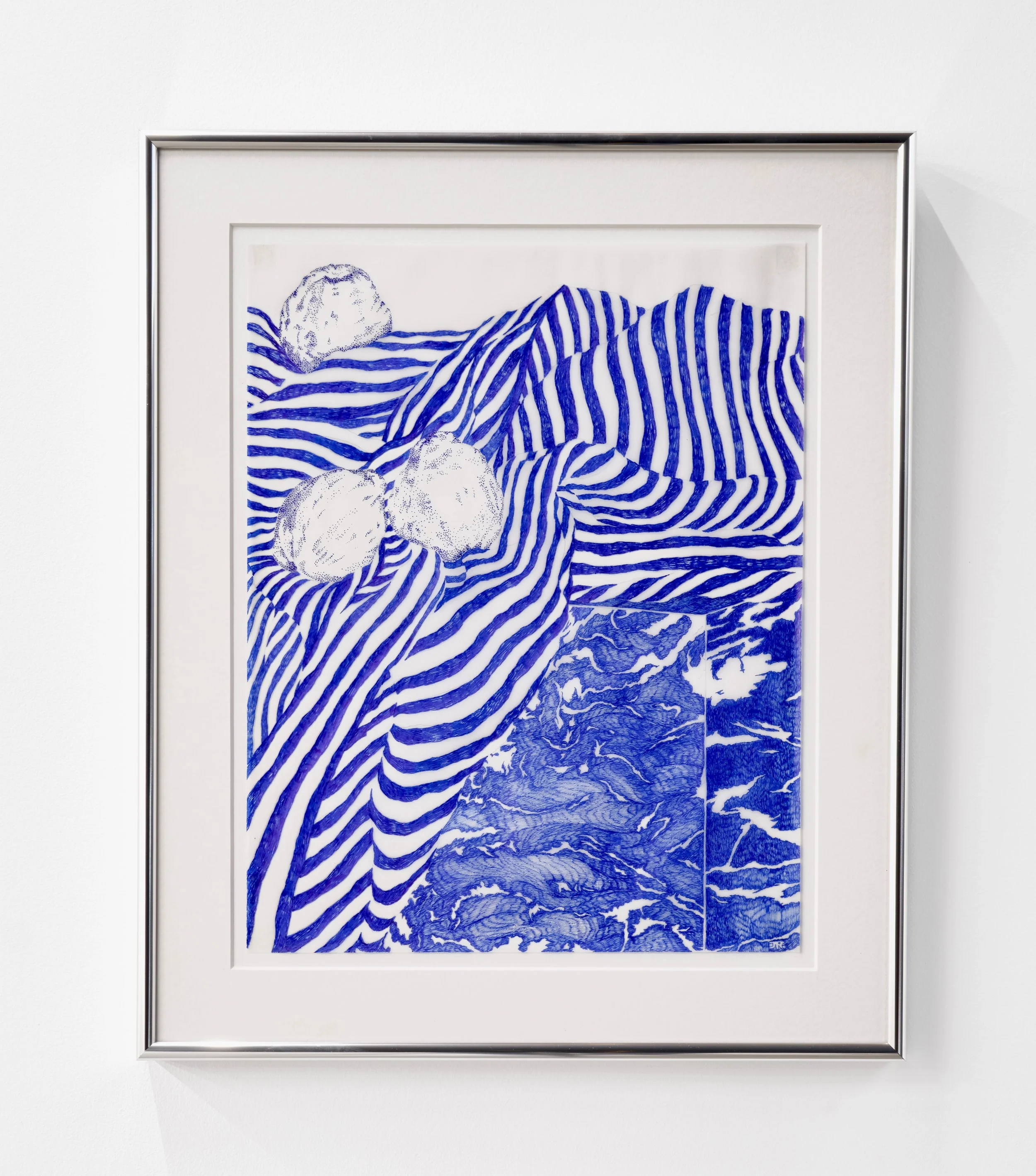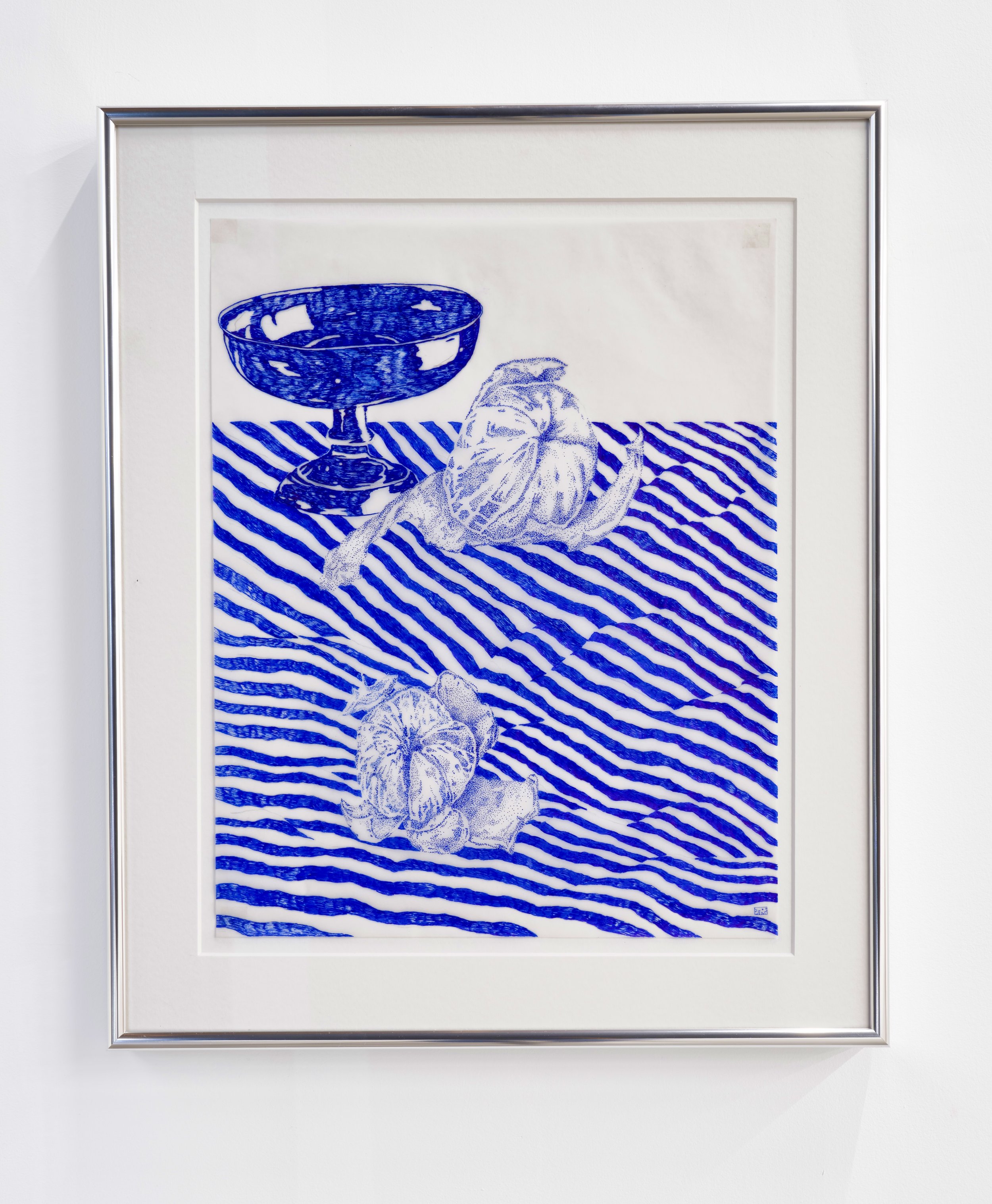



Jeffery From As blue as
November 7, 2025 - December 20, 2025
Hyde Park location
On June 12, 1969, Andy Warhol premiered Blue Movie in New York City. It was the first movie featuring full-frontal, uncensored, explicit sex to have a theatrical release, kickstarting the porno- chic movement of the 1970s. The term blue has been used to refer to the lewd or obscene since at least 1818, and blue movie has been used for pornographic films since at least 1939. Warhol’s naming, however, came originally from not its subject material but its literal material: in a fitting malfunction, daylight had turned the second film reel, which was meant only for indoor lighting, all blue; the naming followed accordingly.
Like Warhol’s blue reel, the works in Jeffrey From’s As blue as, presented by Martha’s, follow materiality first. Created using thirty-two blue Pilot G2 pens, the work’s delicate yet lasting archival materials— vellum, acid-free ink—belie countless hours of labor. The kind of labor that strains your tendons (William Gass: “Among the derivations of the word, I especially like blavus, from medieval Latin, and the earlier, more classical, flavus, for the discolorations of a bruise, so that it sometimes meant yellow. with perhaps a hint of green beneath the skin like naughty underclothes”).
There is an inescapable relationship here between drawing and body, both From’s and the pen: One envisions the ink depleting in the pen as it materializes in the objects drawn on the page, the pen a timekeeper of relationships created with glasses, fruit, marble. One also feels the muscle aches when looking at From’s works, an erotic kind of ache as one imagines the artist tending to them with such care, delicateness.
As made by a gay artist working with ink, From’s drawings are preceded by the not-blue-but- very-blue works of Tom of Finland, the iconic erotic artist that emphasized hypermasculinity. And yet—a delicateness in the subjects of his drawings, as one sees the care with which Tom sculpted the muscles, filled in the hairs of the mustaches, shaded the bulges.
This delicateness extends to From, too, though the flesh the artist depicts is not of human bodies but of mundane objects, made decadent by From’s touch, objects arranged in the historical format of the still life. Vellum is a delicate material, easy to rip, easy to push down too hard into, causing a tear. And the points of pens want to do this—it is From’s tender hand that keeps things intact. But the materials determine too: The waxed surface of the vellum absorbs the impact of the ball’s point, but resists the ink—leaving the blue iridescent.
The delicateness continues in the materials imaged: torn linen, the fleshes of various fruits, melted wax. All evoke a moment of tension—the linen, holding on by literal threads; the fruit, ready to be bruised; the wax and the imagination of it against one’s skin. All must be treated with care.
In a moment when masculinity means one thing, maybe we can take a cue from Tom and From—that masculinity is in its erotics, not just in the muscles but in the tenderness, in the taking care.
Text by Grace Sparapani
Jeffrey From
a banquet, 2025
Ballpoint pen on vellum
19 x26 inches
21 x28 inches framed
Jeffrey From
a chandelier, 2025
Ballpoint pen on vellum
19 x 26 inches
21 x 28 inches framed
Jeffrey From
an orange at night, 2025
Ballpoint pen on vellum
11 x 14 inches
13 x 15 inches Framed
Jeffrey From
marble , 2025
Ballpoint pen on vellum
11 x 14 inches
13 x 15 inches framed
Jeffrey From
a plate of olives, 2025
Ballpoint pen on vellum
11 x 14 inches
13 x 15 inches framed
Jeffrey From
an olive branch, 2025
Ballpoint pen on vellum
11 x 14 inches
13 x 15 inches framed
Jeffrey From
a bunch of tulips, 2025
Ballpoint pen on vellum
11 x 14 inches
13 x 15 inches framed
Jeffrey From
getting up from the table, 2025
Ballpoint pen on vellum
11 x 14 inches
13 x 15 inches framed
Jeffrey From
orange, 2025
Ballpoint pen on vellum
11 x 14 inches
13 x 15 inches
Jeffrey From
a diamond vase, 2025
Ballpoint pen on vellum
11 x 14 inches
13 x 15 inches framed
Jeffrey From
two clementines, 2025
Ballpoint pen on vellum
11 x 14 inches
13 x 15 inches framed
Jeffrey From
torn linen, 2025
Ballpoint pen on vellum
11 x 14 inches
13 x 15 inches framed












